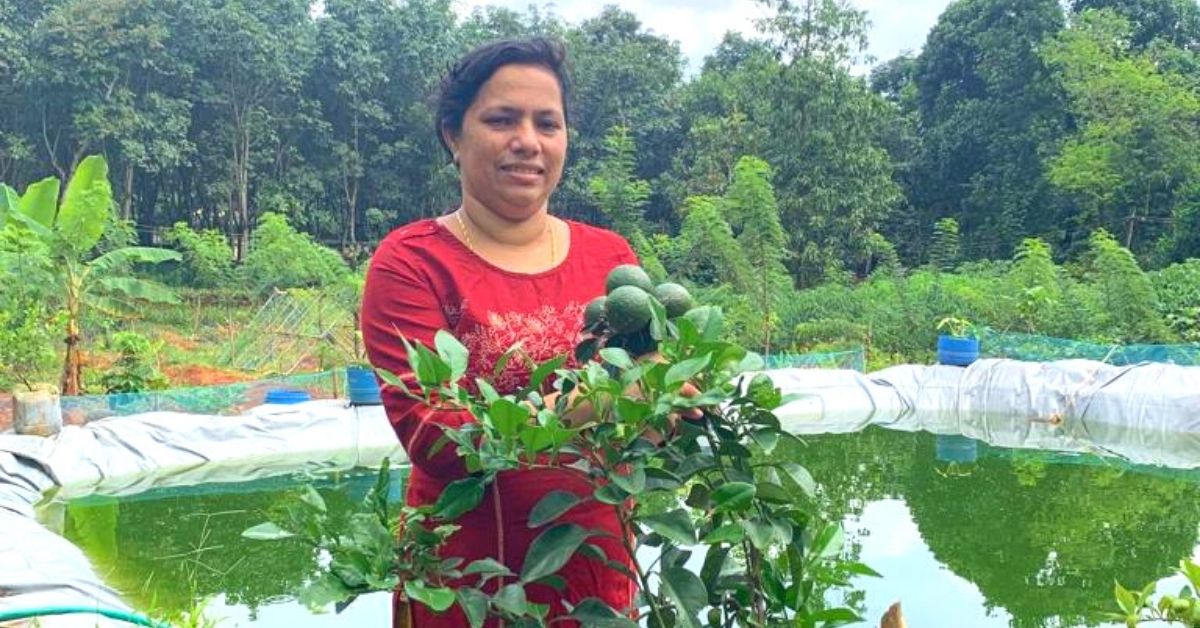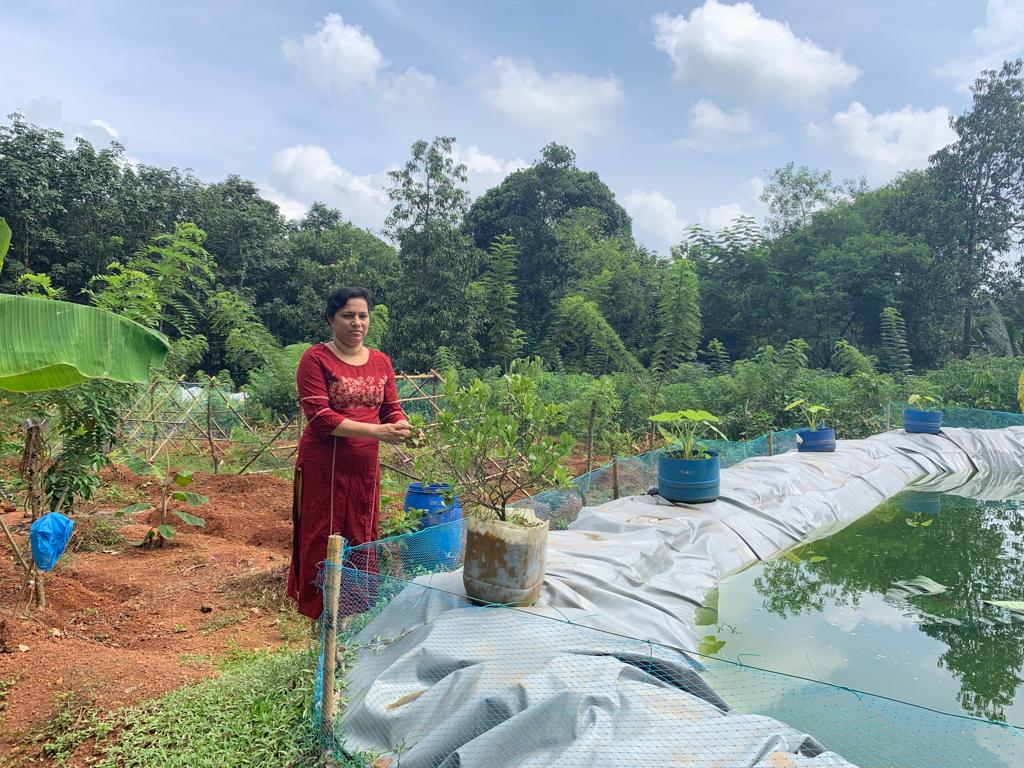A Simple Switch in the Farm Is Helping Kerala Farmer Earn Rs 30 Lakh/Year
Swapna James from Kerala is earning lakhs by making a switch from monocropping, and her efforts have earned her the Innovative Farmer Award by ICAR. Here's her success story.

There is no space on Swapna James’ 15-acre farm that has been left unattended. She has judiciously and smartly used every inch of the field to implement a farming technique called intercropping.
The 45-year-old says her interest in farming piqued after she got married. She decided to help her husband James in organic farming and underwent training conducted by the Agriculture Department and Krishi Vigyan Kendra (KVK) 15 years ago. In the process, she ended up putting the tiny village of Kulakkattukurissi, located in Kerala’s Palakkad district, on the organic crop map of India.

While she began with a moderate investment, she has since doubled her income and inspired other farmers in the region to eliminate chemical use and adopt organic methods of cultivation. Today, she earns an average revenue of Rs 2 lakh per acre, and the farm gives upto Rs 30 lakh in a year, which is almost twice as much as she was earning previously.
Companion planting

Swapna says the training she received gave her the confidence to experiment with her land, which was previously monocultural (a one crop land). Instead of growing just one crop (rubber), she sowed coconut, arecanut, cocoa, nutmeg, coffee, jackfruit and pepper. Her field also has tapioca, banana, ginger, turmeric, yam, bitter gourd, chilly, snake gourd, little gourd, diverse tuber crops, and more.
“Initially we were using chemicals to grow rubber and incurring losses as a result. Either the demand would come down, or, if our plantation was damaged, there was no alternative income source. The soil quality had already deteriorated and the only advantage we had was that we had huge land. In 2006, we diversified. We knew if it wouldn’t work, we could fall back on rubber plantations,” Swapna, a mother of two, tells The Better India.
She adopted intercropping, wherein one crop is grown between rows of other crops. She has also integrated fishpond and animal husbandry as additional income sources.
“The crops are selected in a way that reduces water usage, increases soil fertility, fixes nitrogen and prevents pest attacks. The perfect combination is attained over a period of trials and errors. During the experiments, it is important to keep notes of how the plants, roots, seeds, fruits, and flowers react. The crops share sunlight and nutrients instead of fighting for them,” Swapna explains.
Swapna has planted coconut, nutmeg and turmeric together. Nutmeg and turmeric are shade loving trees that can thrive in between the coconut trees. Similarly, rubber is intercropped with cocoa, coffee, vegetables and bananas. She sows as per the growth of rubber plants. In early weeks, she plants crops that require more sunlight and in later years, ones that can be grown in shade. Pulses and legumes are planted in between the trees to fix nitrogen, and crops like coriander and turmeric make for excellent pest-repellent, she notes.
Due to the companion plantation methods, Swapna has been able to grow numerous varieties of each plant. For instance, she has grown 45 varieties of mangoes like chandrakaran, mallika, sindhooram, kalapadi; 33 diverse jackfruit trees like gumless, muttam varikka, thenvarikka, sindhoori; 26 nutmeg varieties, 14 different guava trees; eight trees from the lemon family; 12 okra varieties, and more.
She has also grown milk fruit (star apple), star fruit, pomegranate, burmese grapes, cherry, mulberry, strawberry, custard apple, and passion fruit. Some medicinal plants include tulsi (Holy Basil), chittamruth (Giloy), panikoorkka (Patta Ajwain), kacholam (Galanga).
The intercropping ensures a steady cash flow throughout the year with different harvesting patterns.
Input costs are another way that Swapna saves money — she has considerably cut down on such costs by keeping three cows to prepare jeevamrutham (cow urine + dung) as a natural fertiliser.
Alongside, she uses Beejamrutha and Panchagavya. While jeevamrutha can be used at any stage of plantation, panchgavya works best before the flowering takes place. The latter is a mixture of five ingredients — cow dung, cow urine, curd, milk and ghee, which enhance the soil fertility and drive away pests. Swapna also adds jaggery and banana to the mixture sometimes. Meanwhile, beejamrutha (a mixture of lime, water, cow dung and cow urine) is used for seed treatment for soil borne diseases.

She collects dry leaves and repurposes them as mulch for the soil and collects nearly 4 lakh litres of rainwater in the artificial pond every year.
“I barely purchase anything from outside. For some cycles, we do buy neem cakes and seeds from outside, but the costs are very minimal,” Swapna adds.
For her diversified knowledge and successful experiments, she was given the ‘Innovative Farmer’ award by the Indian Agricultural Research Institute (ICAR) earlier this year.
Edited by Divya Sethu
If you found our stories insightful, informative, or even just enjoyable, we invite you to consider making a voluntary payment to support the work we do at The Better India. Your contribution helps us continue producing quality content that educates, inspires, and drives positive change.
Choose one of the payment options below for your contribution-
By paying for the stories you value, you directly contribute to sustaining our efforts focused on making a difference in the world. Together, let’s ensure that impactful stories continue to be told and shared, enriching lives and communities alike.
Thank you for your support. Here are some frequently asked questions you might find helpful to know why you are contributing?


This story made me
-
97
-
121
-
89
-
167











